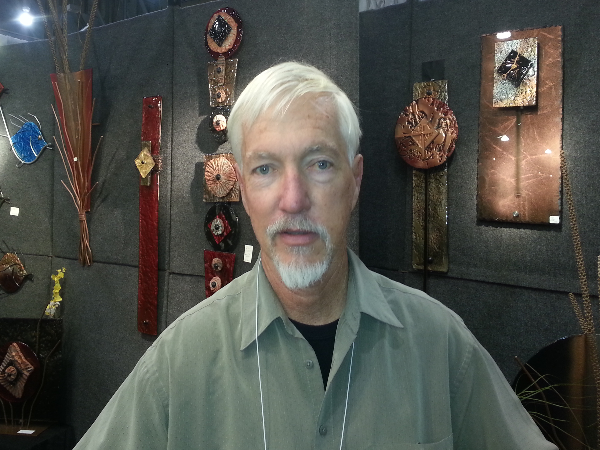Mark Hines: The Visionary American Artist Redefining Glass Design and Ceramics
Exploring the life, age, artistic journey, family background, and achievements of Mark Hines—an inspiring artist whose timeless glass and ceramic works continue to captivate art lovers worldwide.

Mark Hines is a renowned American artist celebrated for his exceptional craftsmanship in glass design and ceramics. With a career spanning over four decades, he has mastered the rare ability to merge traditional artistic techniques with modern creative expression. His distinctive approach has made him a prominent name in contemporary art, with pieces featured in top galleries and private collections around the world. Known for his innovation, passion, and mastery of materials, Mark Hines stands as a true visionary whose artistry transcends time and trends.
Early Life and Background
Mark Hines was born and raised in Southern California, where his passion for art began at an early age. Surrounded by the vibrant culture and artistic influences of the region, he developed a fascination for textures, forms, and colors. These early experiences shaped his artistic identity and led him toward a lifelong dedication to glass and ceramics.
Unlike many artists who pursue conventional art education, Hines’s path was a blend of formal learning and self-taught experimentation. He studied Glass Design and Ceramics at the University of Southern California (USC), but much of his mastery came from countless hours of exploration, trial, and refinement in his own studio. This self-driven approach allowed him to develop a distinct style—one that feels authentic, organic, and deeply personal.
Mark Hines Age and Career Beginnings
While Mark Hines’s exact age is not publicly disclosed, his career dates back to the mid-1970s, marking more than 45 years of artistic contribution. He began working with stained glass in 1976, which laid the foundation for his future in glass artistry. His early works were inspired by the interplay of light, color, and transparency—qualities that would become signature elements in his later creations.
During the late 1970s and 1980s, Hines transitioned into Raku pottery, a Japanese-inspired ceramic technique that involves removing pottery from the kiln while red-hot and allowing it to cool in the open air or combustible materials. This process produces unpredictable crackles and vibrant finishes—something that resonated deeply with Hines’s artistic philosophy of blending control with spontaneity.
Artistic Evolution and Signature Style
Mark Hines’s art evolved from traditional stained glass to complex, multi-dimensional glass sculptures and ceramics that merge function and form. His creative journey can be divided into three distinct phases—each marked by innovation, craftsmanship, and a growing sophistication in technique.
The Stained Glass Era
In the early phase of his career, Hines became known for his stained-glass panels that captured the essence of light and emotion. These works showcased his understanding of color harmony and balance. Each piece told a story, with glass fragments brought together like visual poetry.
The Raku Pottery Phase
Hines’s exploration of Raku pottery became a turning point. His oversized Raku vases and urns gained significant attention from collectors and interior designers. The unique crackled surfaces, iridescent glazes, and organic forms spoke to his deep respect for natural beauty and imperfection.
The Slumped Glass Period
In the later years of his career, Mark Hines embraced slumped glass, a process where sheets of glass are heated until they “slump” into molds, taking on new textures and shapes. This technique allowed him to merge the traditional with the contemporary—creating bowls, vases, candleholders, and wall hangings that are both functional and sculptural. His use of iron stands and sand molds adds depth and structure, transforming each piece into a statement of balance and beauty.
Mark Hines Family and Personal Life
Mark Hines has always maintained a low-profile personal life, preferring to let his art speak for itself. While little is publicly known about his family, he has often mentioned the importance of family support in nurturing his creative spirit. It is believed that his artistic inclination was encouraged from an early age, possibly influenced by a family environment that valued creativity and craftsmanship.
Despite his modesty about personal matters, Hines’s work reflects a strong sense of emotion and connection—perhaps hinting at the deep bonds he shares with those closest to him. His art embodies warmth, reflection, and a profound appreciation for life’s imperfections, qualities that mirror his personal values and relationships.
Recognition and Achievements
Mark Hines’s art has achieved significant acclaim in the United States and internationally. His Raku pottery and slumped glass pieces have been showcased in prestigious art galleries and featured in leading publications such as Architectural Digest. His designs have also been integrated into high-end furniture collections and interior décor projects, demonstrating the versatility and timeless appeal of his work.
Hines’s creations are housed in private collections around the world, from modern homes to corporate spaces. His ability to create art that resonates emotionally and aesthetically with diverse audiences has earned him a loyal following of collectors, interior designers, and fellow artists.
Moreover, Hines’s influence extends beyond his own creations. His innovative techniques and design philosophy have inspired countless emerging artists to explore new ways of blending traditional craftsmanship with modern artistic expression.
Mark Hines Net Worth
Although there are no official public records detailing Mark Hines’s exact net worth, it is estimated to be in the multi-million-dollar range, primarily due to the high demand for his artworks. His pieces, often sold through galleries and luxury art retailers, command premium prices based on size, complexity, and uniqueness.
Collectors value his one-of-a-kind Raku vases, slumped glass sculptures, and decorative wall pieces for their craftsmanship and artistic integrity. Over the decades, his consistent reputation and presence in the art world have solidified his financial success as both a creator and a brand name in contemporary American art.
Mark Hines Wikipedia Overview
While Mark Hines does not yet have an official Wikipedia page, his extensive career and influence in the glass and ceramics field make him a deserving subject for inclusion. Based on verified gallery sources and biographical information, a summary of what would appear on such a page might include:
-
Full Name: Mark Hines
-
Nationality: American
-
Occupation: Artist, Designer, Ceramicist, Glass Sculptor
-
Education: University of Southern California (Glass Design and Ceramics)
-
Years Active: 1976–Present
-
Known For: Raku pottery, Slumped glass, Contemporary art
-
Awards and Features: Recognized in Architectural Digest, represented in major art galleries
-
Artistic Style: Combines traditional ceramic methods with modern glass techniques, creating functional art pieces
-
Website/Representation: Mark Hines Designs (art studio and brand identity)
Philosophy and Inspiration
Mark Hines’s artistic philosophy is grounded in the belief that art should be both beautiful and meaningful. He often speaks about the balance between structure and freedom—between what is planned and what unfolds naturally in the creative process.
His fascination with organic textures, asymmetry, and natural color palettes reflects his connection to the natural world. Each piece he creates feels alive—shaped by heat, gravity, and intention. For Hines, the process of creation is as significant as the finished work itself.
He has often described his art as “a conversation between materials,” where glass, clay, and metal interact to form harmony. This deep respect for material integrity and experimentation is what sets his work apart in the contemporary art scene.
Impact on Modern Art and Design
Mark Hines’s legacy extends far beyond the confines of galleries. His work has influenced interior design trends and modern home décor aesthetics, inspiring designers to incorporate handcrafted glass and ceramics into minimalist and luxury spaces alike.
His use of iron frameworks to display glass sculptures has redefined how art can be presented in three-dimensional form. This approach blurs the line between functional object and sculptural statement, embodying the philosophy that art belongs in everyday life—not just on museum walls.
Today, many art schools and studios study his work as a case example of innovation in glass artistry. His ability to bridge the gap between craft and fine art ensures that his influence will continue for generations to come.
Legacy and Future Works
As Mark Hines continues his creative journey, he remains committed to pushing artistic boundaries. His recent collections emphasize modern minimalism blended with organic flow, showcasing his evolution as an artist who adapts with time yet stays true to his roots.
His dedication to quality, authenticity, and innovation ensures that his work remains relevant in a fast-changing world of art and design. Collectors and fans eagerly anticipate each new release, knowing that every Hines creation carries a piece of his soul and story.
Conclusion
Mark Hines is not just an artist—he is a storyteller, innovator, and craftsman whose legacy is etched in glass and clay. From his humble beginnings in Southern California to international recognition, his journey reflects unwavering passion, discipline, and creativity.
His art speaks to the timeless human desire for beauty, balance, and meaning. Whether through a delicate Raku vase or a bold slumped-glass sculpture, Mark Hines continues to inspire admiration and wonder across the globe. His story is a testament to how dedication and imagination can transform ordinary materials into extraordinary masterpieces.



